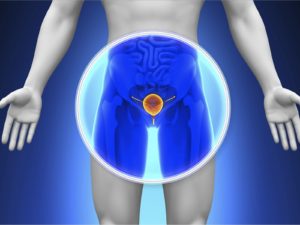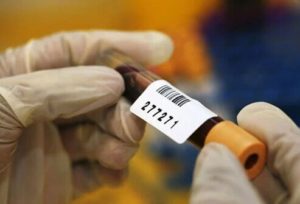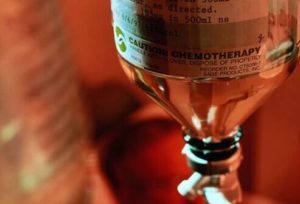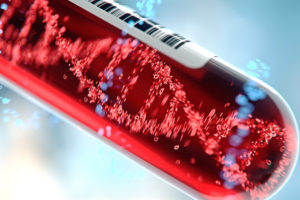Prostate Cancer Tissue and Plasma Samples
Bay Biosciences provides high-quality, fresh frozen biopsy tissue samples. FFPE tissue blocks with matched fresh frozen sera (serum), plasma, and peripheral blood mononuclear cells (PBMC) bio-fluids from patients diagnosed with prostate cancer.
The sera (serum), plasma and PBMC biofluid specimens are processed from prostate cancer patient’s peripheral whole-blood using customized collection and processing protocols.
Fresh frozen tissue and matched biofluid samples are collected from unique patients diagnosed with prostate cancer.
Bio-samples are provided to a valued pharmaceutical customer for research, diagnostics, discovery and drug development.

Prostate Cancer Overview
Prostate cancer is a form of cancer that develops in the prostate gland. Prostate cancer usually develops slowly, so there may be no signs for many years. This type of cancer is common in men over 50. African-Americans and men with a first-degree relative, father or brother, diagnosed with prostate cancer at younger age.
The prostate gland is a walnut-sized gland present only in men, found in the pelvis below the bladder. It wraps around the urethra, which is the tube through which urine exits the body and lies in front of the rectum.
Also it secretes part of the liquid portion of the semen, or seminal fluid, which carries sperm made by the testes. This fluid is essential for reproduction.
The prostate has various functions, including:
- Producing the fluid that nourishes and transports sperm
- Secreting prostate specific antigen (PSA), a protein that helps semen retain its liquid state
- Helping aid urine control
According to the American cancer society (ACS), Other than skin cancer, prostate cancer is the second most common cancer in men in the United States, after skin cancers. The ACS estimates 248,530 new cases of prostate cancer this year and about 34,130 deaths from prostate cancer in the United States.
Common problems are benign (noncancerous) enlargement of the prostate called BPH (benign prostatic hyperplasia), acute and chronic infections of the prostate (acute and chronic bacterial prostatitis), and chronic inflammation of the prostate that is not related to bacteria (chronic prostatitis) [non-bacterial]).
Types of Prostate Cancer
Almost all prostate cancers are adenocarcinomas. These cancers develop from the gland cells (the cells that make the prostate fluid that is added to the semen).
Other types of cancer that can start in the prostate include:
- Small cell carcinomas
- Neuroendocrine tumors (other than small cell carcinomas)
- Transitional cell carcinomas
- Sarcomas
These other types of prostate cancer are rare. Majority of the prostate cancers, are almost certain to be an adenocarcinoma. Some prostate cancers grow and spread quickly, but most grow slowly.
According to the ACS, autopsy studies show that many older men (and even some younger men) who died of other causes also had prostate cancer that never affected them during their lives. In many cases, neither they nor their doctors even knew they had it.
Stages of Prostate Cancer
Following are the prostate cancer stages:
- Stage I: The cancer is small and still contained within the prostate gland.
- Stage II: The cancer is more advanced, but is still confined within the prostate gland.
- Stage III: The cancer has spread to the outer part of the prostate and to the nearby seminal vesicles.
- Stage IV: The cancer has spread to lymph nodes, other nearby organs, or tissues such as the rectum or bladder, or to distant sites such as the lungs or bones.
- Aggressive prostate cancer often reaches stage IV but others that are less aggressive may never progress past stage I, II, or III.
Causes of Prostate Cancer
Prostate cancer develops when specific changes occur, usually in glandular cells. Cancerous or precancerous cells in the prostate gland are called prostatic intraepithelial neoplasia (PIN). Almost 50% of all males over the age of 50 years have PIN.
At first, the changes are slow, and the cells are not be cancerous. However, they can become cancerous with time. Cancer cells can be high grade or low grade. High grade cells are more likely to grow and spread, while low grade cells are not likely to grow and are not a cause for concern.
Signs and Symptoms of Prostate Cancer
Symptoms of prostate cancer do not usually appear until the prostate is large enough to affect the tube that carries urine from the bladder out of the penis (urethra).
Following are signs and symptoms of more advanced prostate cancers:
- Abdominal Pain
- Bone fracture or bone pain, especially in the hips, thighs, or shoulders
- Changes in bowel habits
- Edema, or swelling in the legs or feet
- Fatigue
- Problems urinating, including a slow or weak urinary stream or the need to urinate more often, especially at night
- Blood in the urine or semen
- Erectile dysfunction
- Trouble getting an erection (erectile dysfunction or ED)
- Painful ejaculation
- Pain in the hips, back (spine), chest (ribs), or other areas from cancer that has spread to bones
- Pain or discomfort when sitting, if the prostate is enlarged
- Unexplained Weight Loss
- Weakness or numbness in the legs or feet, or even loss of bladder or bowel control from cancer pressing on the spinal cord

Risk Factors of Prostate Cancer
Exact causes of why prostate cancer develops are unknown, but following factors may increase the risk:
- Age: The risk increases after the age of 50, but it is rare before the age of 45.
- Race or ethnicity: It is more common in black males than white ,ales. Asian and Hispanic males have a lower risk than black males or white males.
- Family history: If a male has a close relative with a history of prostate cancer, they have a higher chance of developing it themselves.
- Genetic factors: Inherited features, including changes to the BRCA1 and BRCA2 genes, may increase the risk. Mutations in these genes increase the chance of breast cancer in females, too. Men born with Lynch syndrome also have a higher risk of prostate and other cancers.
Other Possible Factors
There is some evidence to suggest that other factors may play a role, but scientists need more evidence to confirm their involvement:
- Diet
- Obesity
- Smoking
- Exposure to chemicals, such as the herbicide Agent Orange
- Inflammation of the prostate
- Sexually transmitted infections
- Vasectomy
Diagnostic Tests of Prostate Cancer
The diagnosis of prostate cancer ultimately is based on the pathologist’s review of tissue removed at the time of the prostate biopsy. An abnormal PSA and/or abnormal digital rectal examination often are present and are the indications for the prostate biopsy.
Digital Rectal Examination (DRE): As part of a physical examination, your doctor inserts a gloved and lubricated finger into the rectum and feels toward the front of your body. The prostate gland is a walnut or larger sized gland immediately in front of the rectum, located beneath the bladder.
Back portion of prostate gland can be felt in this manner. Findings on this exam are compared to notes about the patient’s prior digital rectal examinations.
Prostate Specific Antigen (PSA) Blood Test: The PSA blood test measures the level of a protein found in the blood that is produced by the prostate gland and helps keep semen in liquid form.
PSA test can indicate an increased likelihood of prostate cancer if the PSA level is increased or elevated or has changed significantly over time, but it does not provide a definitive diagnosis. Prostate cancer can be found in patients with a low PSA levels as well, but this occurs less than 20% of the time.
Prostate biopsy: A biopsy refers to a procedure that involves taking of a sample of tissue from an area in the body. Prostate cancer is only definitively diagnosed by finding cancer cells on a biopsy tissue sample taken from the prostate gland.
The pathologist’s report on the biopsy sample showing prostate cancer will contain much detailed information. The size of the biopsy core and the percentage of involvement of each core will be reported.
Most importantly the prostate cancer present will be assigned a numerical score, which is usually expressed as a sum of two numbers (for example, 3 + 4) and is referred to as the Gleason Score
This characterizes the appearance of the cancer cells and helps predict its likely level of aggressiveness in the body.
A Gleason score of 6 or less indicates a low grade prostate cancer, whereas scores of 8-10 indicate a high-grade prostate cancer.
A new prostate cancer grading system was developed in 2014 to help assess risk and assign a Gleason grade group.
This grade group is particularly useful in Gleason score 7, where the predominant cell type could be a 4 or a 3, which may impact prostate cancer risk.
- Gleason grade group 1: Gleason score < 6
- Gleason grade group 2: Gleason score 3+4= 7
- Gleason grade group 3: Gleason score 4+3 = 7
- Gleason grade group 4: Gleason 4+4 =8, 3+5 = 8 and 5+3 = 8
- Gleason grade group 5: Gleason score 9 and 10
The Gleason score and the extent of involvement of the biopsy core expressed as a percentage, as well as the PSA level as well as the general state of health and otherwise estimated life expectancy, all help to allow doctors to make their best recommendations regarding how the cancer should be treated.
Stages of Prostate Cancer
The American Joint Commission on Cancer (AJCC) system for prostate cancer staging is as follows:
- T designations refer to the characteristics of the prostate cancer primary tumor
- T1 prostate cancers cannot be seen on imaging tests or felt on examination. These may be found incidentally when surgery is done on the prostate for a problem presumed to be benign, or on needle biopsy for an elevated PSA.
- T1a means that the cancer cells comprise less than 5% of the tissue removed.
- T1b means that cancer cells comprise more than 5% of the tissue removed.
- T1c means that the tissue containing cancer was obtained by needle biopsy for an elevated PSA.
- T2 prostate cancers are those that can felt (palpated) on physical examination of the prostate gland (on digital rectal exam) or that can be visualized with imaging studies such as ultrasound, X-ray, or related studies. The prostate gland is comprised of two halves or lobes. The extent of involvement of those lobes is described here.
- T2a means the cancer involves one half of one lobe of the prostate or less.
- T2b means the cancer involves more than half of one lobe but does not involve the other lobe of the prostate.
- T2c means that the cancer has grown into or involves both lobes of the prostate.
- T3 prostate cancers have grown to the extent that the tumor extends outside of the prostate gland. Adjacent tissues, including the capsule around the prostate gland, the seminal vesicles, as well as the bladder neck, may be involved in T3 tumors.
- T3a means that the cancer has extended beyond the capsule (the outer edge) of the prostate gland but not into the seminal vesicles.
- T3b means that the cancer has invaded into the seminal vesicles.
- T4 prostate cancers have spread outside of the prostate gland and have invaded adjacent tissues or organs. This may be determined by examination, biopsy, or imaging studies. T4 prostate cancer may involve the pelvic floor muscles, the urethral sphincter, the bladder itself, the rectum, or the levator muscles or the pelvic wall. T4 tumors have become fixed to or invaded adjacent structures other than the seminal vesicles.
Treatment of Prostate Cancer
Treatment of prostate cancer depends on the stage of the cancer, among other factors. Following are some of the available treatments for prostate cancer:
Early Stage Prostate Cancer
If the cancer is small and localized, a doctor may recommend the following:
Watchful Waiting and Monitoring
The doctor may check PSA blood levels regularly but take no immediate action. Prostate cancer grows slowly, and the risk of side effects may outweigh the need for immediate treatment.
Surgery
A surgeon may carry out a prostatectomy. They can remove the prostate gland using either laparoscopic or open surgery.
Radiation Therapy
Following are the available options for radiation therapy:
Brachytherapy: In this procedure a doctor will implant radioactive seeds into the prostate to deliver targeted radiation treatment.
Conformal radiation therapy: This targets a specific area, minimizing the risk to healthy tissue. Another type, called intensity modulated radiation therapy, uses beams with variable intensity. Treatment will depend on various factors. A doctor will discuss the best option for the individual patient.

Advanced Prostate Cancer
As cancer grows, it can spread (metastasize) throughout the body. If it spreads, or if it comes back after remission, the treatment options will change.
Following are some of the treatment options for advanced stage prostate cancer:
Chemotherapy: Chemotherapy can kill cancer cells around the body, but it can cause adverse effects.
Hormonal Therapy: Androgens are male hormones. The main androgens are testosterone and dihydrotestosterone. Blocking and reducing these hormones appears to stop or delay the growth of cancer cells. One option is to undergo surgery to remove the testicles, which produce most of the body’s hormones. Various drugs can also help.
Lupron is a kind of hormone therapy that doctors use to treat prostate cancer. Majority of doctors do not recommend surgery in the later stages, as it does not treat cancer that has spread (metastasize) to other parts of the body. However, some experts have suggested that it may help in some cases.
New Treatments
Some newer approaches aim to treat prostate cancer without the side effects that other treatment options can bring. These include:
- Cryotherapy
- High intensity focused ultrasound
After surgery, a doctor will continue to monitor PSA levels.
Effects on Fertility
The prostate gland plays and important role in sexual reproduction. Prostate cancer and many of its treatments affect fertility in several ways. For example, if a male has surgery to remove either the prostate gland or the testicles, it will affect semen production and fertility.
Also, radiation therapy can affect prostate tissue, damaging sperm and reducing the amount of semen for transporting it.
Hormonal treatment can also affect fertility.
However, some options for preserving these functions include:
- Banking sperm before surgery
- Extracting sperm directly from the testicles for artificial insemination
However, there is no guarantee that fertility will remain intact after treatment for prostate cancer. Anyone who would like to have children after treatment should discuss fertility options with their doctor when they devise their treatment plan.

Bay Biosciences is a global leader in providing researchers with high quality, clinical grade, fully characterized human tissue samples, bio-specimens and human bio-fluid collections.
Samples available are cancer (tumor) tissue, cancer serum, cancer plasma cancer PBMC and human tissue samples from most other therapeutic areas and diseases.
Bay Biosciences maintains and manages its own bio-repository, human tissue bank (biobank) consisting of thousands of diseased samples (specimens) and from normal healthy donors available in all formats and types.
Our biobank procures and stores fully consented, deidentified and institutional review boards (IRB) approved human tissue samples and matched controls.
All our human tissue collections, human specimens and human bio-fluids are provided with detailed samples associated patient’s clinical data.
This critical patient’s clinical data includes information relating to their past and current disease, treatment history, lifestyle choices, biomarkers and genetic information.
Patient’s data is extremely valuable for researchers and is used to help identify new effective treatments (drug discovery & development) in oncology, other therapeutic areas and diseases.
Bay Biosciences banks wide variety of human tissue samples and biological samples including cryogenically preserved at – 80°C.
Including fresh frozen tissue samples, tumor tissue samples, FFPE’s, tissue slides, with matching human bio-fluids, whole blood and blood derived products such as serum, plasma and PBMC’s.
Bay Biosciences is a global leader in collecting and providing human tissue samples according to the researchers specified requirements and customized, tailor-made collection protocols.
Please contact us anytime to discuss your special research projects and customized human tissue sample requirements.
Bay Biosciences provides human tissue samples (human specimens) from diseased and normal healthy donors which includes:
- Peripheral whole-blood,
- Amniotic fluid
- Bronchoalveolar lavage fluid (BAL)
- Sputum
- Pleural effusion
- Cerebrospinal fluid (CSF)
- Serum (sera)
- Plasma
- Peripheral blood mononuclear cells (PBMC’s)
- Saliva
- Buffy coat
- Urine
- Stool samples
- Aqueous humor
- Vitreous humor
- Kidney stones (renal calculi)
- Other bodily fluids from most diseases including cancer.
We can also procure most human bio-specimens and can-do special collections and requests of human samples that are difficult to find. All our human tissue samples are procured through IRB approved clinical protocols and procedures.
In addition to the standard processing protocols Bay Biosciences can also provide human plasma, serum, PBMC bio-fluid samples using custom processing protocols, you can buy donor specific sample collections in higher volumes and specified sample aliquots from us.
Bay Biosciences also provides human samples from normal healthy donors, volunteers, for controls and clinical research, contact us Now.
日本のお客様は、ベイバイオサイエンスジャパンBay Biosciences Japanまたはhttp://baybiosciences-jp.com/contact/までご連絡ください。


